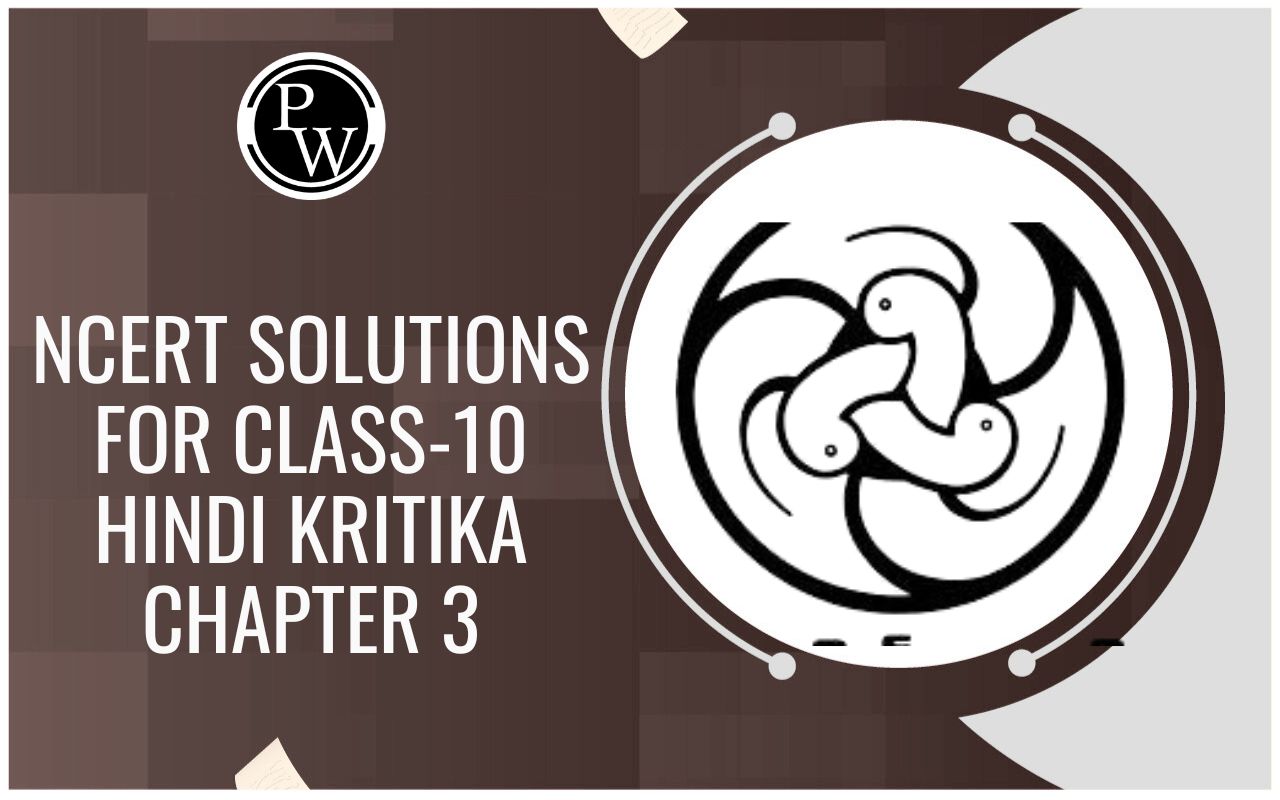
Class 10th Social Science Notes
Our CBSE Notes Class 10 Social Science are a valuable resource for students who want to ace their board exams. Social science is a vast subject that covers History, Geography, Political Science and Economics. These CBSE Notes Class 10 Social Science are based on the latest NCERT books and CBSE guidelines. They are written in a simple and easy to understand language.
We have created these CBSE Notes Class 10 Social Science , a comprehensive guide that covers all the important concepts, facts, and topics of the subject. These notes will help you revise the syllabus, answer questions, and do well on exams. They provide a chapter-wise summary, a concept explanation, and a sample question paper with solutions.
The latest CBSE Notes Class 10 Social Science consists of four units: India and the Contemporary World - II (History), Contemporary India - II (Geography), Democratic Politics - II (Political Science), and Understanding Economic Development (Economics). Each unit has five chapters and carries 20 marks in the board examination. Here is a chapter-wise breakdown of each subject:
| SI. NO. | Units | No. of Periods | Marks |
| I | India and the Contemporary World -II | 60 | 20 |
| II | Contemporary India - I | 55 | 20 |
| III | Democratic Politics - I | 50 | 20 |
| IV | Understanding Economic Development | 50 | 20 |
| Total | 215 | 80 |
| Table of Content |
CBSE Notes Class 10 Social Science History
- Chapter 1: The Rise of Nationalism in Europe
In the 18th and 19th centuries, European nationalism emerged as a political and cultural movement. The French Revolution, Napoleonic Wars, unification of Italy and Germany, and Balkan Wars shaped European nationalism and nation-states.
- Chapter 2: Nationalism in India
India's independence struggle is recounted in this chapter. It covers the Non-Cooperation Movement, Civil Disobedience Movement, Quit India Movement, Mahatma Gandhi, Jawaharlal Nehru, Subhash Chandra Bose, and Bhagat Singh.
- Chapter 3: The Making of a Global World
This chapter examines globalization's effects on the economy, society, and culture. Globalisation began with pre-modern trade and migration patterns and was shaped by the Industrial Revolution, imperialism, world wars, and decolonization.
- Chapter 4: The Age of Industrialisation
This chapter studies the development of industrialisation and its effects on labour, environment and society. It compares the patterns of industrialisation in Britain and India, and explains how colonialism hindered India's industrial growth. It also discusses the social and cultural changes brought about by industrialisation in both countries.
CBSE Notes Class 10 Social Science Geography
- Chapter 1: Resources and Development
This chapter introduces the concept of resources and their classification into natural, human and human-made resources. It explains how resources are distributed, conserved and managed in different regions of India. It addresses resource planning, sustainable development, and land degradation.
- Chapter 2: Forest and Wildlife Resources
This chapter discusses the importance of forest and wildlife resources for biodiversity conservation and human well-being. It describes the types, distribution and status of forest and wildlife resources in India. It also addresses the threats to forest and wildlife resources, such as deforestation, poaching, habitat loss and fragmentation.
- Chapter 3: Water Resources
This chapter discusses India's water supply, distribution, and use. It describes how agriculture, industry, domestic use, and hydroelectric power generation depend on water. Water scarcity, pollution, and state-to-state water disputes are also addressed.
- Chapter 4: Agriculture
This chapter explores the various aspects of agriculture in India, such as types of farming, cropping patterns, major crops, agricultural development, and challenges. Climate, soil, irrigation, technology, and government policies affect agriculture. It also examines agriculture's role in food security and rural development.
- Chapter 5: Minerals and Energy Resources
This chapter describes the types, distribution, and extraction of minerals and energy resources in India. It explains how minerals are vital for industrialization and economic development. It also discusses how conventional and non-conventional energy sources like coal, petroleum, natural gas, nuclear power, solar power, wind power, etc.
- Chapter 6: Manufacturing Industries
This chapter deals with the importance of manufacturing industries for the development of a country. It discusses factors that affect industry location and classification. It also discusses how different industries affect the Indian economy and their issues.
- Chapter 7: Lifelines of National Economy
This chapter focuses on the role of transport, communication and trade in connecting different regions and facilitating economic activities. It describes the various modes of transport and communication in India and their advantages and disadvantages. It also analyses the pattern and direction of India’s foreign trade.
- Chapter 8: Natural Hazards and Disaster Management
This chapter introduces the concept of natural hazards and disasters and their causes and effects. It defines hazard, disaster, vulnerability, and risk. It describes earthquakes, volcanoes, cyclones, floods, droughts, landslides, and avalanches. It also suggests disaster preparedness and mitigation.
CBSE Notes Class 10 Social Science Political Science
| Chapter 1: Power Sharing |
| Chapter 2: Federalism |
| Chapter 3: Democracy and Diversity |
| Chapter 4: Gender, Religion and Caste |
| Chapter 5: Popular Struggles and Movements |
| Chapter 6: Political Parties |
- Chapter 1: Power Sharing
This chapter discusses power sharing to promote democracy and avoid social conflict. India, Belgium, and Sri Lanka provide examples of horizontal and vertical power sharing.
- Chapter 2: Federalism
This chapter defines federalism as a system of government where power is divided between a central authority and various constituent units. It compares federalism with the unitary system and confederation. It also analyses how federalism works in India by looking at its features such as the written constitution, division of powers,bicameralism etc.
- Chapter 3: Democracy and Diversity
In this chapter, democracy accommodates social diversity based on religion, language, ethnicity, etc. It discusses how social differences are expressed or managed can cause conflict or cooperation. It examines how democratic political parties represent diverse interests and identities.
- Chapter 4: Gender Religion Caste
This chapter examines how gender, religion, and caste affect politics in India. It explains how these factors create inequalities, discrimination, and exclusion among people. It also shows how people challenge these inequalities through movements, protests, demands for rights reservations etc.
- Chapter 5: Popular Struggles Movements
This chapter studies how people participate in politics through popular struggles movements that demand change or resist injustice. It distinguishes between direct indirect forms of participation and gives examples from India Nepal Bolivia etc.
- Chapter 6: Political Parties
This chapter examines the role, purpose and no. of Political Parties in Democracy. It evaluates the contributions made by national and regional political parties to the making of Indian democracy.
CBSE Notes Class 10 Social Science Economics
| Chapter 1: Development |
| Chapter 2: Sectors of Indian Economy |
| Chapter 3: Money and Credit |
| Chapter 4: Globalisation and the Indian Economy |
| Chapter 5: Consumer Rights |
- Chapter 1: Development
This chapter introduces development as a multidimensional concept that involves economic, social, and environmental aspects. It explains how development can be measured by using indicators such as income per capita , human development index etc. It also discusses how people have different notions, goals, aspirations for development based on their values, needs, preferences etc.
- Chapter 2: Sectors of Indian Economy
This chapter classifies economic activities into three sectors primary secondary tertiary based on their nature output contribution etc. It analyses how these sectors are interdependent, perform differently over time, employ different proportions of workforce etc. It also explains how sectors are organised into formal informality based on their regulation protection benefits etc.
- Chapter 3: Money Credit
This chapter explains money and credit as essential components of economic transactions and exchange. It describes how money evolved from the barter system to modern forms such as currency cheques cards etc. It also describes how credit is created by financial institutions such as banks, cooperatives, self-help groups etc for various purposes such as production consumption investment etc.
- Chapter 4: Globalisation and the Indian Economy
This chapter defines globalisation as a process of integration interconnection among countries through trade investment migration communication technology culture etc. It examines how globalisation affects the Indian economy by looking at its positive and negative impacts on production markets, consumers, workers etc.
- Chapter 5: Consumer Rights
This chapter highlights consumer rights as an important aspect of economic development welfare. It explains why consumers need protection from exploitation, cheating fraud, adulteration etc by producers sellers service providers etc. It also suggests ways to protect consumer rights by creating awareness laws, organisations redressal mechanisms etc.
Other Important Links for CBSE Notes Class 10 Social Science
| Class 10th Social Science Study Material | Class 10th Social Science Revision Notes |
| Class 10th Social Science NCERT Solution | Class 10th Social Science Sample Papers |
CBSE Notes Class 10 Social Science: FAQs
Q1. How can I access the CBSE Notes Class 10 Social Science?
Ans. The CBSE Notes Class 10 Social Science are available online or as a PDF on our website.
Q2. How can I use the CBSE Notes Class 10 Social Science for revision?
Ans. You can use our CBSE Notes Class 10 Social Science for revision by reading the chapters and subtopics that are relevant for your exams. You can also refer to the diagrams, maps, charts, tables, and timelines to revise the important facts and information. You can also solve the practice questions and sample papers to check your progress and identify your strengths and weaknesses.
Q3. How can I use the CBSE Notes Class 10 Social Science for doubt clearing?
Ans. You can use the CBSE Notes Class 10 Social Science for doubt clearing by reading the detailed explanations and examples that are provided for each concept and topic.
Q4. How can I use the CBSE Notes Class 10 Social Science to score well in the exams?
Ans. You can use the CBSE Notes Class 10 Social Science to score well in the exams by following the tips and strategies that are given in the notes. You can also follow the NCERT guidelines and the marking schemes that are provided in the notes. You can also practice writing answers in a clear and concise manner using the keywords and points that are given in the notes.
Q5. How can I use CBSE Notes Class 10 Social Science for enhancing my knowledge and skills?
Ans. Our CBSE Notes Class 10 Social Science can help you learn about the subject's topics and concepts. Discover social science perspectives and methods. The Notes' case studies and projects allow you to apply your knowledge and skills to real-world problems.





